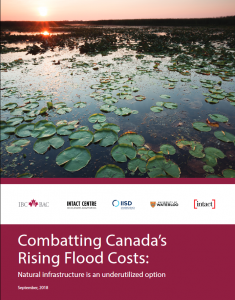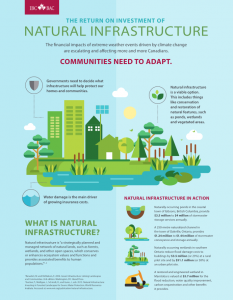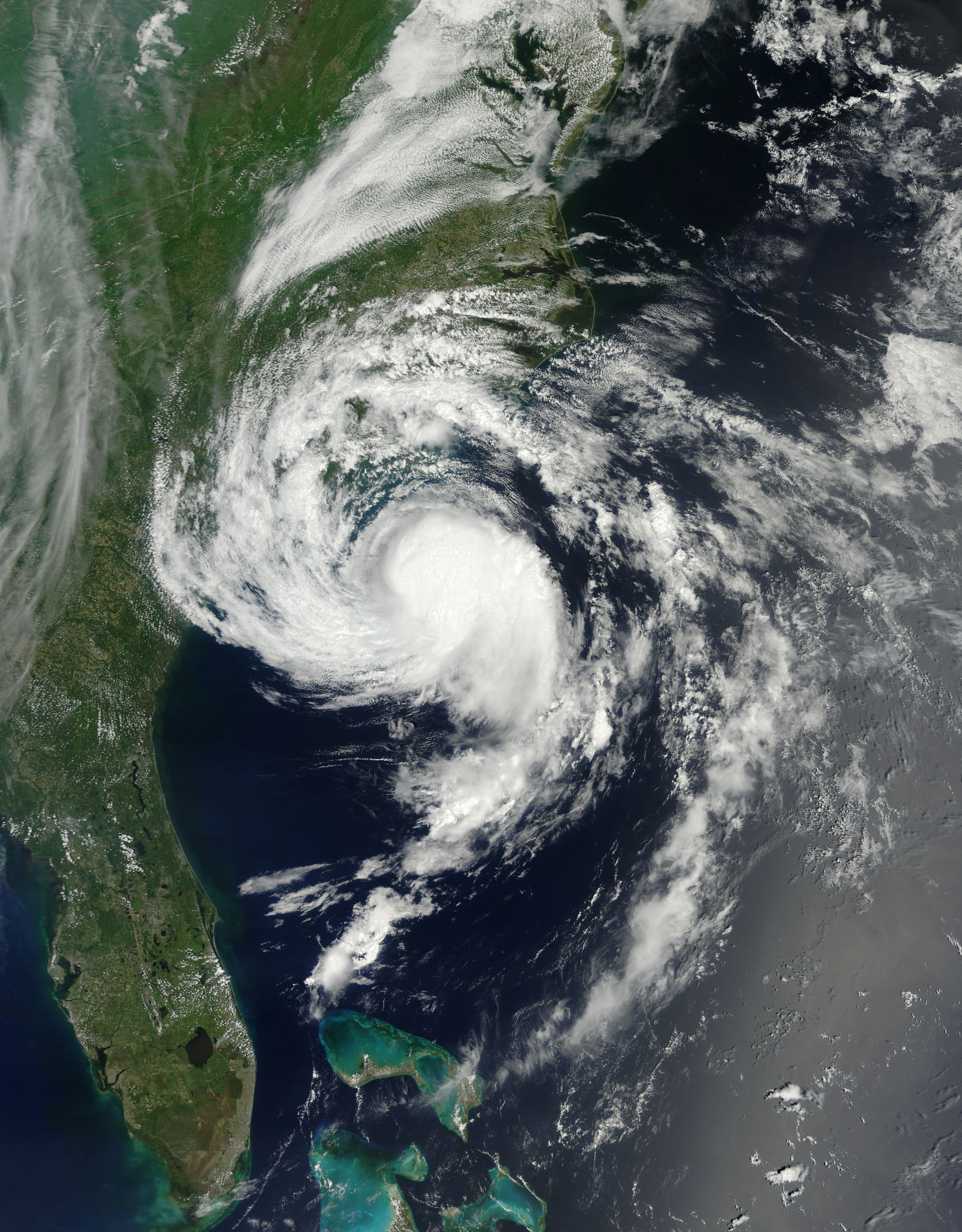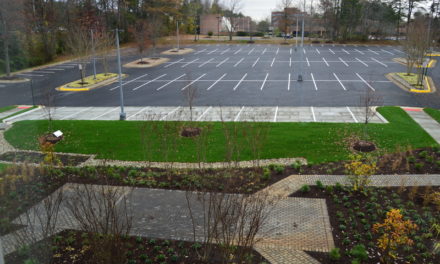
This September 2018 report from the Insurance Bureau of Canada advocates for using green infrastructure to mitigate flood risk.
A new Insurance Bureau of Canada (IBC; Toronto, Ontario) report urges communities to consider green infrastructure to limit flood risk. IBC is the national industry association representing Canada’s private home, auto, and business insurers. Its member companies make up 90% of the property and casualty insurance market in Canada.
The report, Combatting Canada’s Rising Flood Costs: Natural infrastructure is an underutilized option, demonstrates how to quantify the benefits and costs of such green infrastructure features as ponds, wetlands and vegetated areas as a strong complement or a viable alternative to grey infrastructure option for flood mitigation.
“Nature conservation and climate resilience go hand in hand,” said Craig Stewart, vice president of Federal Affairs at IBC. “This report emphasizes that coastal and inland flood risk can be reduced by conserving and restoring natural infrastructure, such as wetlands and coastal marshes, and that the return on investment of natural infrastructure can at times exceed that of built infrastructure, such as dams and dikes. Nature can be our best friend in lowering the risk of exposed communities.”
To create the report, IBC collaborated with the Intact Centre on Climate Adaptation (Ontario, Canada) and the International Institute for Sustainable Development (IISD; Winnipeg, Manitoba, Canada) in this latest insurance industry initiative to help communities address their economic risk associated with climate change.
The green infrastructure implementation framework profiled in the report provides an improved due-diligence process for the assessment and implementation of green infrastructure projects.
“Natural infrastructure, such as an inland or coastal wetland, is not mere decoration – it limits flood risk and the downstream discharge of pollutants, while at the same time supporting biodiversity,” said Dr. Blair Feltmate, Head of the Intact Centre. “In response, every attempt should be made to retain and restore natural infrastructure today, if we are to avoid unconscionable economic, social, and environmental losses tomorrow.”
The report’s executive summary provides some examples of where green infrastructure helped prevent material financial losses from flooding:
- Naturally occurring ponds in the coastal town of Gibsons, British Columbia (BC) provide $3.5 million to $4 million of stormwater storage services annually.
- A 250-m naturalized channel in the town of Oakville, Ontario, provides $1.24 million to $1.44 million of stormwater conveyance and storage annually.
- Naturally occurring wetlands in southern Ontario reduce flood damage costs to buildings by $3.5 million (or 29%) at a rural pilot site and by $51.1 million (or 38%) at an urban pilot site.
Read the full IBC press release about the report.







